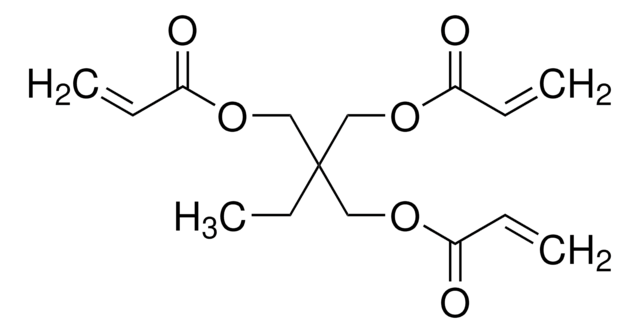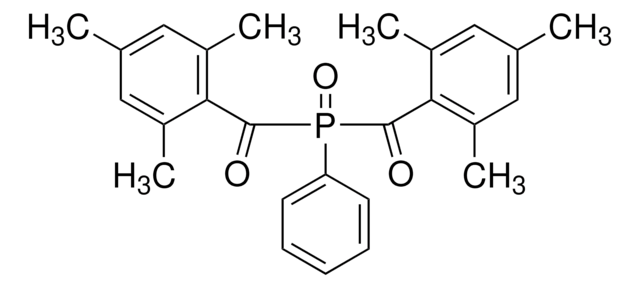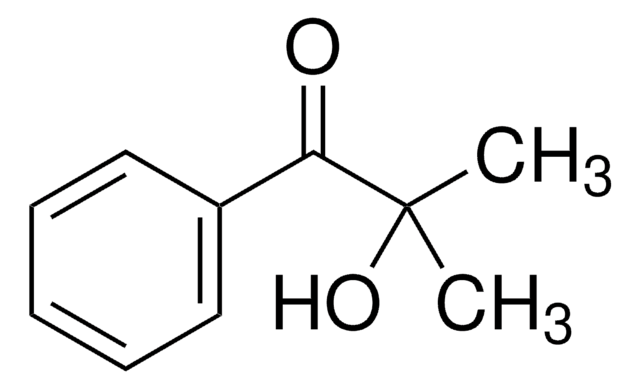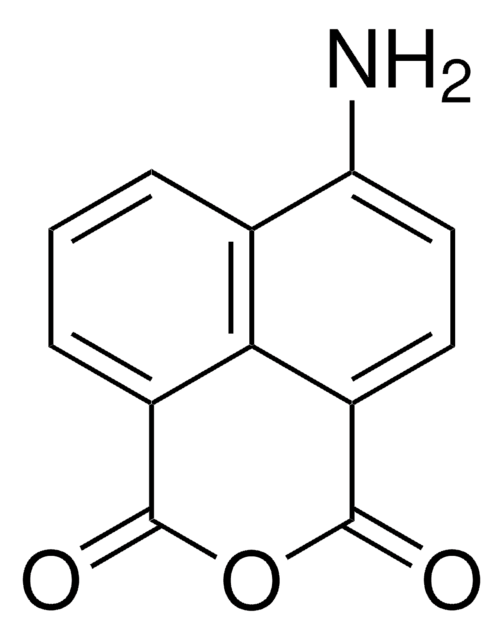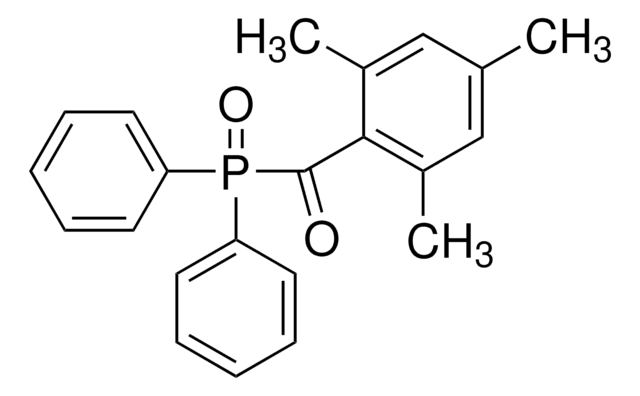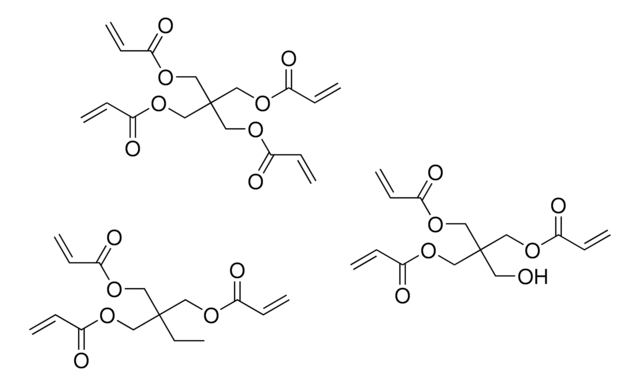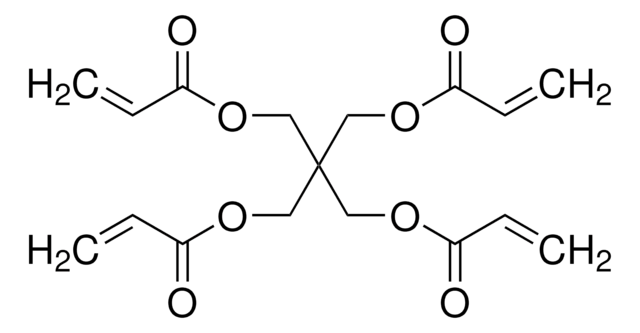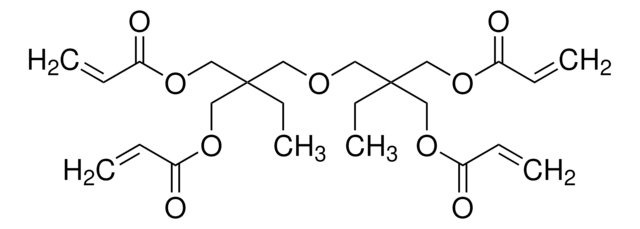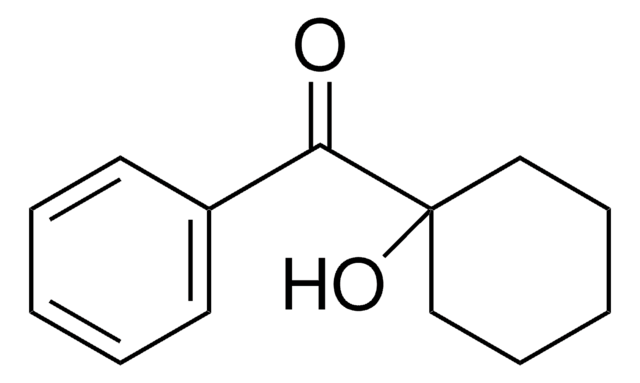246816
1,6-Hexanediol diacrylate
technical grade, 80%
Sinónimos:
Hexamethylene glycol diacrylate, Hexane-1,6-diyl diacrylate, HDODA
About This Item
Productos recomendados
grade
technical grade
Quality Level
vapor density
>1 (vs air)
vapor pressure
<0.01 mmHg ( 20 °C)
assay
80%
form
liquid
contains
100 ppm monomethyl ether hydroquinone as inhibitor
refractive index
n20/D 1.456 (lit.)
density
1.01 g/mL at 25 °C (lit.)
SMILES string
C=CC(=O)OCCCCCCOC(=O)C=C
InChI
1S/C12H18O4/c1-3-11(13)15-9-7-5-6-8-10-16-12(14)4-2/h3-4H,1-2,5-10H2
InChI key
FIHBHSQYSYVZQE-UHFFFAOYSA-N
Categorías relacionadas
General description
Application
- A monomer for the synthesis of poly(1,6-hexanediol diacrylate) (PHDA)-based polymer microspheres and bifunctional microcapsules. The resulting PHDA-based polymer embedded with TiO2 nanoparticles finds uses in various potential applications in fields such as sensing, drug delivery, and photonics.
- A sensitizer in the UV-curable inks commonly used in the printing industry.
- A cross-linking agent in conjunction with a photocatalytic system to modify cellulose material. The resulting crosslinked cellulose material finds uses in various potential applications such as paper manufacturing, textiles, and biomedical devices.
- A monomer in the synthesis of polyurethane acrylate (PUA) which is used to produce polymer electrolytes for use in lithium batteries.
- A resin (copolymer of 1,6-hexanediol diacrylate and styrene) by suspension polymerization, which is applicable in the preparation of hydrophobic peptide sequences.
- Monodispersed poly(HDDA)/TiO2 microspheres, applicable in the degradation of methylene blue.
signalword
Warning
hcodes
Hazard Classifications
Aquatic Acute 1 - Aquatic Chronic 2 - Eye Irrit. 2 - Skin Irrit. 2 - Skin Sens. 1
Storage Class
10 - Combustible liquids
wgk_germany
WGK 2
flash_point_f
235.4 °F - closed cup
flash_point_c
113 °C - closed cup
ppe
Faceshields, Gloves, Goggles, type ABEK (EN14387) respirator filter
Elija entre una de las versiones más recientes:
¿Ya tiene este producto?
Encuentre la documentación para los productos que ha comprado recientemente en la Biblioteca de documentos.
Los clientes también vieron
Nuestro equipo de científicos tiene experiencia en todas las áreas de investigación: Ciencias de la vida, Ciencia de los materiales, Síntesis química, Cromatografía, Analítica y muchas otras.
Póngase en contacto con el Servicio técnico